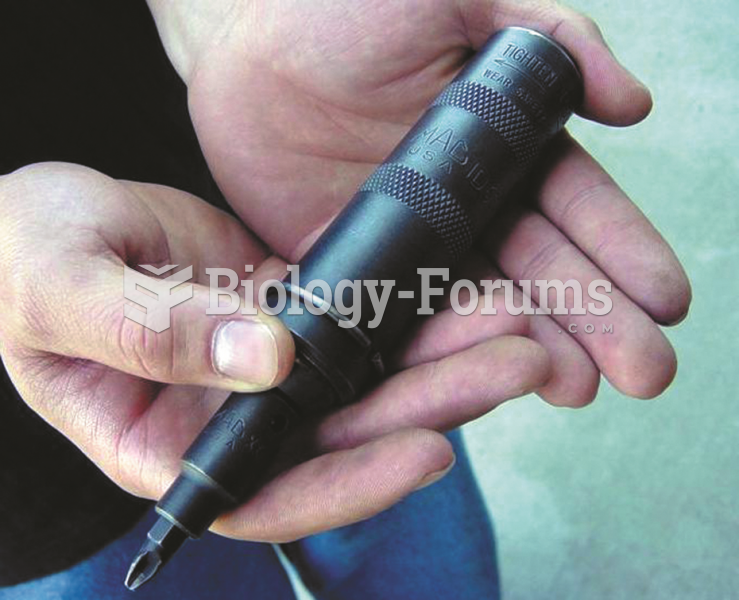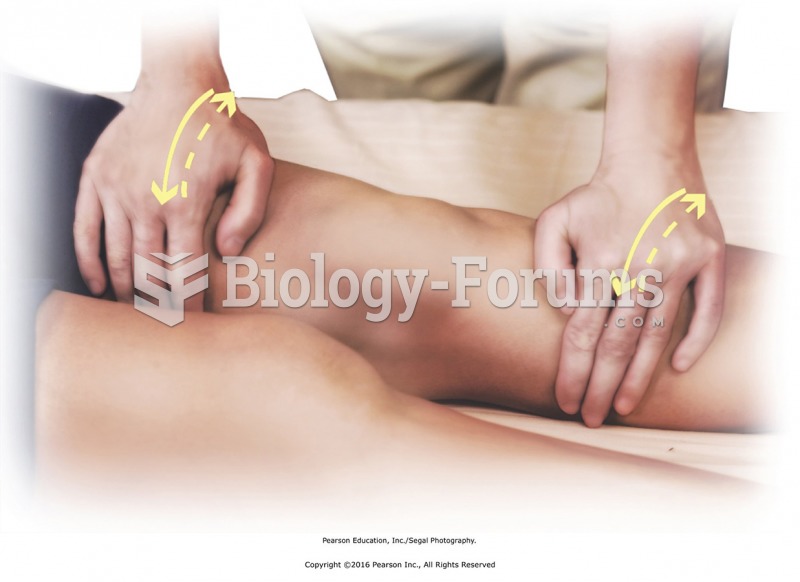|
|
|
Malaria was not eliminated in the United States until 1951. The term eliminated means that no new cases arise in a country for 3 years.
Medications that are definitely not safe to take when breastfeeding include radioactive drugs, antimetabolites, some cancer (chemotherapy) agents, bromocriptine, ergotamine, methotrexate, and cyclosporine.
Egg cells are about the size of a grain of sand. They are formed inside of a female's ovaries before she is even born.
The most dangerous mercury compound, dimethyl mercury, is so toxic that even a few microliters spilled on the skin can cause death. Mercury has been shown to accumulate in higher amounts in the following types of fish than other types: swordfish, shark, mackerel, tilefish, crab, and tuna.
In 2010, opiate painkllers, such as morphine, OxyContin®, and Vicodin®, were tied to almost 60% of drug overdose deaths.
 An offset screwdriver is used to install or remove fasteners that do not have enough space above to ...
An offset screwdriver is used to install or remove fasteners that do not have enough space above to ...
 An impact screwdriver used to remove slotted or Phillips head fasteners that cannot be broken loose ...
An impact screwdriver used to remove slotted or Phillips head fasteners that cannot be broken loose ...





